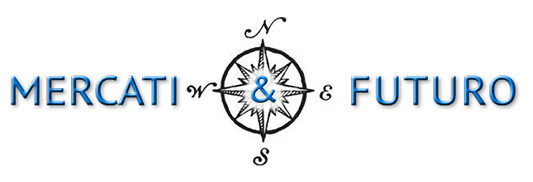Copper, Aluminium, our april 2014 forecasts
Here follow some excerpts of our Copper and Aluminium april 2014 forecasts as a sample of our services to foreign companies (among which there are some multinational entities).
FORECAST (LME 3-months prices)
Copper
“Our forecasts, (…) suggest for the next 12 months a price range of 7.580 – 5.800 $”.
Aluminium
“Our forecasts, (…), suggest for the next 12 months a price range of 1.920 – 1.670 $”.
SCENARIO (April 2014)
“(…) The recent recovery in prices of industrial metals from the lows of the year is not attributable to improved prospects for economic growth, but to renewed speculation about possible new measures to stimulate the economy by the Chinese government, or export restrictions introduced by governments of some producing countries. The positive trend of the market will continue a little longer, also for the return at work of specialized funds, hedge funds and other financial investors. It ‘s inevitable, however, that at some point the prices will return to deal with the fundamentals and the real economy, especially Chinese.
– The monetary policy of the major Western Countries and Japan should continue with the same orientation foreseen so far, and, despite possible reductions in securities purchases from the U.S. banking sector, out-and-out monetary restrictions are very unlikely. On the other hand, no dangerously inflationary trend should change the current expectations for the year, while continuing supporting markets and the financial component of the economy.
– Emerging economies are now in a more stable situation, after a sharp decline in economic activity (which still does not seem to be significantly recovering). Should this situation remain stable, creating the conditions for a gradual improvement in the economy, reflections on prices of raw materials will be perceived, though less strongly than in the past. In any case, however, we do not see a real recovery for emerging Countries, neither particularly rapid nor pronounced. We still prefer to be cautious on this issue.
– Cuts in production and restrictions intended at removing part of the offer from the market could still occur and contribute to the rise in metal prices. Protectionist trends seeking to maintain the internal situation of some Countries stable, are likely to condition the situation in this sense. In addition, the growing nationalistic tendencies (particularly in Africa), limiting the operations of foreign compagnie, may restrict the offer. In some South American Countries, however, the export quota policy and the taxation of foreign companies operating in the mining sector could worsen, with a consequent contraction of activities.
– The ongoing financial and political crisis in several Countries and emerging markets are changing the risk perception of thew international investors who, at a certain point, might divert money back to the West, searching for major safeness and calmness. After a long time our opinion on the U.S. and Europe got better, and we consider very likely a rebalancing of the trends of globalization in favour of the major Western countries, in spite of the fact that the structural crisis taking place in the same are still ongoing and at an early stage.
– A slight improvement in the European and American economies is now possible, but it would only be, in our view, due to the outflow of investors from the emerging countries which, at this stage, would not have alternatives but to return to invest in the West. This improvement should not bring particular benefits to commodity prices.
– The devaluation of the dollar against the euro is not significantly affecting commodities and, in particular, base metals. At this stage, in fact, a rebalancing in the foreign exchange seems to be underway after the severe crisis that had affected the euro zone in the recent years; this fact has invigorated the European currency for the return of investors. Nevertheless, the dollar remains strong against other currencies, with rare exceptions, preventing from a re-evaluation of the commodities prices, in their typical inverse correlation against the U.S. currency. The above also explains why the euro is not falling despite the ongoing crisis in Ukraine.
– The Baltic Dry Index quotes (a measure of the cost of shipping goods of the most important non-cash) remain at extremely depressed values and not far from the lows recorded in the spring of last year,. Given that the current values are in 950 zone and the absolute lows were in area 600, while the quotes before the 2008 crisis arrived to about 12,000, one can easily deduce from this reliable indicator that any sound and sustainable recovery of the international economy is still far away and very unlikely in the short to medium term.
– China continue sto be the fundamental driver for the prices of the most closely linked to the economic cycle commodities. Even a better tone of economic recovery in Europe and the United States will not affect much the price of commodities, and however not long lasting. The situation of the Chinese economy is still showing many critical points, while the economic indicators are particularly weak, again in agreement with our predictions made last year.
– The Crisis in Ukraine and, more generally, the geopolitical situation will continue to dominate the world stage. While this will affect economic growth, on the other hand this fact will have positive repercussions for the West, for the return of investments to the United States and Western Europe, to the detriment of Emerging countries. A reshaping of globalization trends is possible, as well as a greater closure of markets in perspective. See also the left column.
– China and , more generally, the BRICS countries are in a delicate phase of transition to new economic models less linked to production – export. Moreover, these countries will have to face the inevitable political changes resulting from changes in their societies, especially in the last decade. In this situation, in our opinion, the rates of double-digit growth recorded in the past will remain a memory and the economy in the emerging areas will not be of great help to the prices of commodities. We therefore believe that, in the absence of decisive support of the BRICS, the markets of the commodities most closely linked to the cycles of the economy, in 2014, should be less nervous and volatile and could go back to move accordingly to key fundamentals in the short term, rather than the expectations of the international economy future development. This applies if the economic situation in Asia remains at least stable. However, if the emerging economies processes of transformation will evolve less orderly and peaceful than expected resulting, for example, in facts that are disruptive to the economy and markets (worth mentioning at the first place the possibility of a financial and banking crisis in China), there will be extremely heavy consequences, especially for the raw materials prices.
– We recall again that the priority objectives of the 12th Five-Year Plan of China (2011-2015) are sustainable growth, improvement in industrial activity, promotion of domestic consumption. In the past and with great anticipation we have repeatedly pointed out how these factors would have been negative for commodity prices.
– There are still conditions that suggest excess supply of the more closely linked to economic cycles commodities, for 2014, even if the situation seems destined to a gradual improvement, especially for metals other than copper and aluminum. This also applies to oil and coal that do not seem destined to a particular price increase nor a particularly volatile market conditions (…)”.



